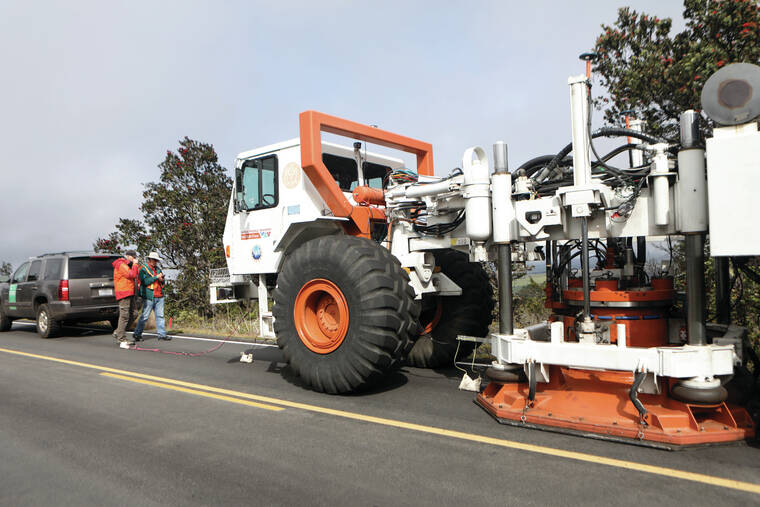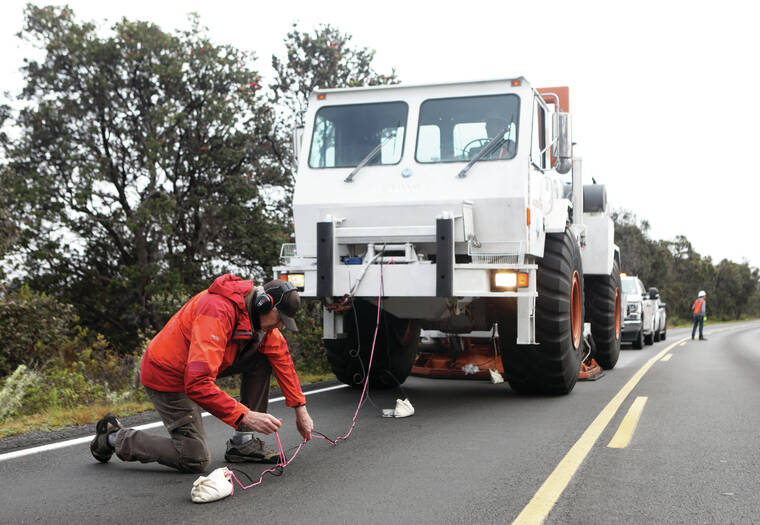Hawaii Volcanoes National Park is experiencing some good vibrations for the rest of the month.
Visitors may see a large and loud truck driving throughout the park, stopping intermittently at various points on the roads and lowering a wide plate against the ground. If one were to get close to the vehicle, they could feel strong vibrations emanating from the truck through the pavement and into the soles of their feet.
The truck is a seismic vibrator, or vibroseis, which is currently working to generate a high-resolution seismic map of the Kilauea caldera.
“Right now, we have 1,800 sensors all around the caldera, and they’re picking up the signals the truck sends out,” said Roger Denlinger, geophysicist for the U.S. Geological Survey. “It’s like throwing a rock into a pond, and as the ripples spread out, we see how a stick floating on the water is affected.”
By sending vibrations through the earth and picking them up on the array of sensors, Denlinger explained that scientists can determine the area’s velocity structure — as the vibration waves propagate through the ground at different speeds depending on the terrain’s composition, the delta between when certain sensors detect the waves can be used to build models of the volcano’s subsurface structures.
Denlinger said the seismographic instruments at Kilauea’s summit installed by USGS’ Hawaiian Volcano Observatory use similar principles to monitor and record earthquake data in the area. But the seismic imaging project uses 100 times as many sensors, Denlinger estimated, all picking up data originating from a known singular point.
This, Denlinger said, will create a more detailed model of the volcano’s inner workings than has been available in the past, although any details smaller than the vibrations’ wavelengths, approximately 50 yards, will be undetectable.
“It’s basically like a CAT scan,” Denlinger explained.
The vibroseis technique has been used by the oil industry for decades, Denlinger said — the word itself was a trademark of Conoco until 2003 — but technology has improved since then.
For example, he said, the truck currently working at HVNP, which was borrowed from the University of Texas at Austin, can vibrate both vertically and horizontally, changing the character of the waves.
Field work on the project began in April when Denlinger’s team started distributing the 1,800 sensors throughout the volcano. The first vibrations began on May 7 and will continue until the end of the month.
After that, Denlinger said, the sensors will be collected, the truck will be sent back to Texas, and USGS will begin parsing the data — although he said that it likely will be a few years before the model is complete.
Email Michael Brestovansky at mbrestovansky@hawaiitribune-herald.com.


